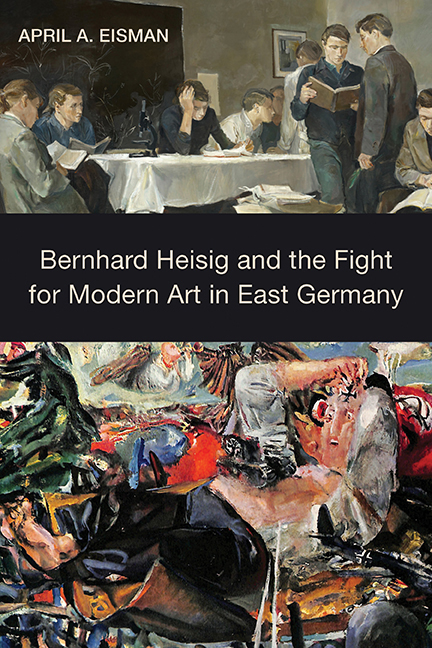Book contents
- Frontmatter
- Contents
- List of Illustrations
- Acknowledgments
- List of Abbreviations
- Introduction: Why Heisig Matters
- 1 From the Nazi Past to the Cold War Present
- 2 Art for an Educated Nation
- 3 Against the Wall: Murals, Modern Art, and Controversy
- 4 The Contentious Emergence of the “Leipzig School”
- 5 Portraying Workers and Revolutionaries
- Conclusion: The Quintessential German Artist
- Notes
- Bibliography
- Index
2 - Art for an Educated Nation
Published online by Cambridge University Press: 14 June 2019
- Frontmatter
- Contents
- List of Illustrations
- Acknowledgments
- List of Abbreviations
- Introduction: Why Heisig Matters
- 1 From the Nazi Past to the Cold War Present
- 2 Art for an Educated Nation
- 3 Against the Wall: Murals, Modern Art, and Controversy
- 4 The Contentious Emergence of the “Leipzig School”
- 5 Portraying Workers and Revolutionaries
- Conclusion: The Quintessential German Artist
- Notes
- Bibliography
- Index
Summary
On August 13, 1961, construction began on the Berlin Wall. Although viewed in the West with almost universal horror and disdain as the symbol of a dictatorship gone wrong, one in need—quite literally—of walling in its own people, the wall had a more complicated reception in East Germany, where many intellectuals, including Heisig, saw it as a necessary evil, the only way to save the “better Germany,” which had been in danger of collapsing in on itself as a result of the loss of skilled and educated workers across the border. In the year before the Berlin Wall was built, nearly two hundred thousand citizens had left East Germany. The higher ideals of the self-proclaimed anti-fascist East were no match for the lure of the materially prosperous West.
The building of the Berlin Wall marked a new phase in the history of East Germany, one in which the SED turned away from the idea of reunification and attempted to establish the country's identity as a Socialist nation. It also marked a shift in the East German art scene to a younger generation of artists and, ultimately, to a more modern style. Many artists, even some from the older generation, believed that the wall, by eliminating the immediate threat of the West, would enable them to take more chances with their work. And some began advocating for an art based on German rather than Soviet precedents.
Just two weeks after construction on the wall began, Heisig became director of the Leipzig Academy, a position he held until 1964. It was during these years as director that Heisig began showing paintings in major exhibitions in East Germany and that his style started to change toward the complex, modernist aesthetic for which he is now known. It was also at this time that he began to clash with politicians and cultural functionaries in a number of high-profile conflicts. Before the 1960s were over, he would be at the center of at least four major controversies, the first of which took place in the spring of 1964, just shortly after he resigned as the director of the Leipzig Academy.
- Type
- Chapter
- Information
- Publisher: Boydell & BrewerPrint publication year: 2018



